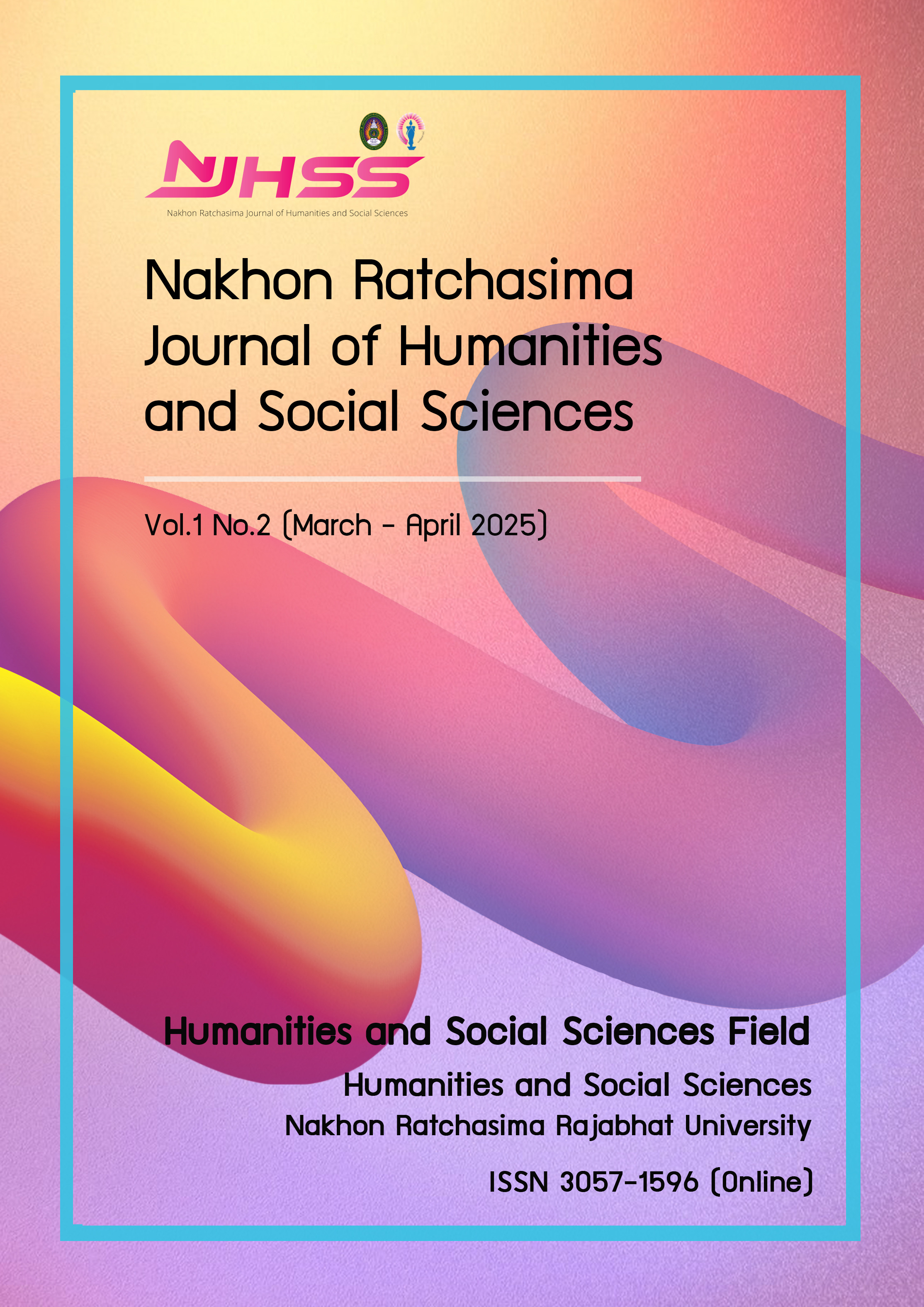The Emergence and Rationale of the Reminder-Emphasis Construction "N是用来V的" in Chinese
คำสำคัญ:
N是用来V的, Reminder-Emphasis, Construction Emergence, Rationale of Constructionบทคัดย่อ
This paper primarily investigates the emergence process of the reminder-emphasis construction“N是用来V的” (N is used to V). The formal emergence process unfolds as follows: from the objective event narration “用NV” (use N to V), to the subjective evaluation of things “N可以用来V” (N can be used to V), and finally to the inter-subjective assessment “N是用来V的” (N is used to V). The emergence of meaning primarily relies on pragmatic inference: the speaker violates the cooperative principle, the listener actively engages in inference, and the implicature is captured. During the emergence process, the construction requires that N possesses the property of “everyday activity” and V exhibits “conventional functionality,” while“是用来……的” (is used to...) emphasizes “functional prominence”.
References
Chafe, Wallace (1994). Discourse, Consciousness, and Time: The Flow and Displacement of Conscious Experience in Speaking and Writing. Chicago University Press.
Chen, P. (1987). An Explanation of Four Sets of Concepts Related to Nominal Components in Chinese. Chinese Language, (2), 81-89.
Fan, K. & Zhang, Y. (2000). Modern Chinese Grammar Analysis. East China Normal University Press.
Goldberg, A. E. (1995). Constructions: A Construction Grammar Approach to Argument Structure. The University of Chicago Press.
Grice, H. P. (1975). Logic and Conversation. In P. Cole & J. L. Morgan (Eds.), Syntax and Semantics (Vol. 3, pp. 41–58). Academic Press.
Guo, R. (1997). Process and Non-process: Two External Temporal Types of Predicative Components in Chinese. Chinese Language, (3), 162-175.
Liu, D. (2002). Semantic and Syntactic Properties of Generic Expressions in Chinese. Chinese Language, (5), 411-422.
Lü, S. (1985). Interrogation, Negation and Affirmation. Chinese Language, (4), 241-251.
Shen, J. (2015). Asymmetry and Markedness Theory (Original work published 1999). The Commercial Press.
Shi, C. (2013). Constructional Perspectives and Related Theoretical Issues in Sentence Pattern Analysis. Chinese Linguistics, (2), 23-38.
Traugott, E. C. (1989). On the Rise of Epistemic Meanings in English: An Example of Subjectification in Semantic Change. Language, 65(1), 31–55.
Traugott, E. C. (2008). The Grammaticalization of NP of NP Constructions. In Bergs Alexander & Gabriele Diewald (Eds.), Constructions and Language Change. Mouton de Gruyter.
Traugott, E.C. & Dasher, R.B. (2002). Regularity in Semantic Change. Cambridge University Press.
Wu, F. (2004). Recent Advances in Grammaticalization Studies. Foreign Language Teaching and Research, (1), 18-24.
Yin, C. & Yuan, Y. (2022). Semantic Requirements and Syntactic Realization of Functional "NP可以VP" Sentences. Chinese Language Learning, (1), 13-26.
Yuan, Y. (2003). The Syntactic and Semantic Functions of Sentence-Final "的" from the Perspective of Focus Theory. Chinese Language, (1), 3-16.
Zhang, B. & Fang, M. (1996). Studies on Functional Grammar of Chinese. Jiangxi Education Press.
Downloads
เผยแพร่แล้ว
How to Cite
ฉบับ
บท
License
Copyright (c) 2025 Nakhon Ratchasima Journal of Humanities and Social Sciences

This work is licensed under a Creative Commons Attribution-NonCommercial-NoDerivatives 4.0 International License.





